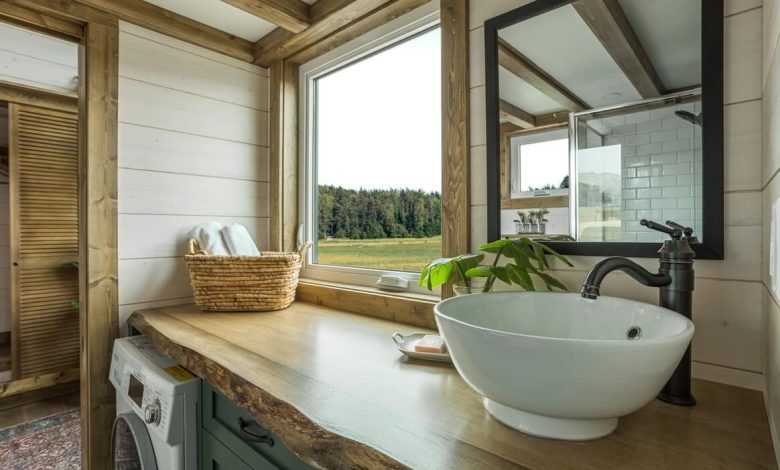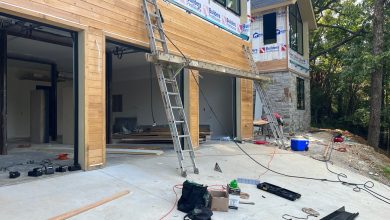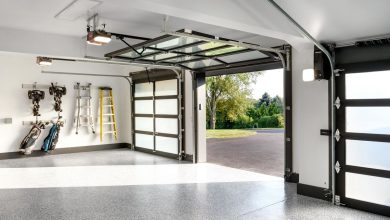Are tiny houses the future?

Tiny houses have been around for more than a decade, and many people are curious about their future role in sustainable living.
While some of the early promises made by small movement supporters haven’t come true, and it’s doubtful that everyone will be “moving tiny,” it’s evident that tiny houses and micro-dwelling in general have a place in the diverse tapestry of living circumstances and lifestyles.
How Will Tiny Homes Look in 2022?
When the tiny homes builders movement first took off, one sort of tiny house soon established the image that people had in mind when they imagined a small home: the tiny house on wheels (THOW). They were magnificent, boxy residences erected on solid trailers to avoid construction rules, and they represented their creators’ eccentric ambitions and distinctive personalities.
THOWs remain an important component of the movement, but more than a decade of innovation and expansion has supplied them with a plethora of alternative choices for individuals who aren’t keen on living in a mobile home. Building standards are evolving to suit new ways of living, entrepreneurs are challenging decades-old building processes, and fascinating new types of small houses and micro-dwelling solutions that we could only dream of when it all began are becoming accessible.
The small house movement is alive and well, and tiny houses of all sizes and kinds have a secure future.
Sustainability and Tiny Houses
We don’t simply mean environmental and climatic sustainability when we speak about small houses and sustainability. We’re talking about financial sustainability, legal sustainability, lifestyle change/sustainability, and the physical durability of small houses themselves.
Financial Stability of Tiny Houses
While tiny houses are not immune to the tremendous inflation we’ve all seen, their small footprint and initial price make them an appealing alternative when compared to regular residences. With the typical house in the United States currently selling for $374,900, it’s easy to see the attractiveness of a well-built compact home.
They’ve risen in price in tandem with the cost of constructing supplies, but they’re still consistently available for $30,000 to $60,000. That represents a substantial savings over the cost of a standard house.
Legal Sustainability of Tiny Homes
The legal status for small houses has always been complicated, and as none of us here are attorneys, take everything with a grain of salt. There are encouraging signals for the future legal status of small dwellings.
Some municipalities, like as Pima County, Arizona, are changing their zoning regulations to allow for the construction of small houses as single-family residences. These include THOWs with their wheels removed, similar to an old-school prefabricated house.
Overall, unless it’s an ADU, it might still be tough to construct a small house permanently.
Tiny Modular Homes
The majority of the emphasis in the small house movement is focused on tiny houses on wheels, but new advancements in mass-produced modular homes are making considerable ripples. If you’re unfamiliar with the word, modular houses are the next generation of classic “manufactured homes” that provide previously unattainable levels of quality, affordability, and size.
Shippable, fully wired, and piped small houses in the 300-400 square foot range may be lawfully installed on foundations, according to modular home companies like Boxabl. They are planned and manufactured to fulfill the most strict state and local construction requirements, unlike contemporary small house makers.
You Can Read Also : Choosing the Right Furniture for Your Home
What are the expenses of starting a small home business?
The major cost is the construction materials. Tiny homes builders need a wide range of resources, including wood, nails, bricks, lights, appliances, flooring, and so forth. Administrative responsibilities will also need the establishment of an office. Computers, printers, desks, seats, and high-speed Internet are all required in your business. To create these adorable small dwellings, you’ll also need a crew of tiny home builders. Some small home builders purchase the land on which the tiny dwellings are constructed. If you want to buy such property before building the small dwellings, be sure to budget for these pricey land purchases.
What are the continuing costs of running a small home business?
One of the most significant small home company expenditures is labor. Your small home builders will need a minimum pay of $12 to $15 per hour, if not more. The wage range for the construction foreman/manager will be $45,000 to $100,000. As time passes, you will need to recruit a receptionist, administrator, marketing specialist, and accountant. Receptionists and administrators may expect to earn between $10 and $15 per hour. Professionals in marketing and accounting generally make between $35,000 and $55,000 per year.
How much money may you charge your customers?
Tiny dwellings vary in price from $5,000 to $50,000 or more. The actual price is determined on the house’s size, location, and features. These little houses are attractive to a broad range of people. If you opt to rent out your little house as a hotel, you may charge up to $200 each night. People are prepared to pay considerable money for a short stay in a small home to see whether this way of life appeals to them and to find out what all the buzz is about.
How much money can a small home company make?
A small home company has the potential to generate six figures straight now. The amount of profit your tiny home company produces is determined by overhead expenses, the number of houses your team can construct, and the status of your local real estate market. Continue to construct and market small houses, and you may have a multi-million dollar company within a half-decade.




